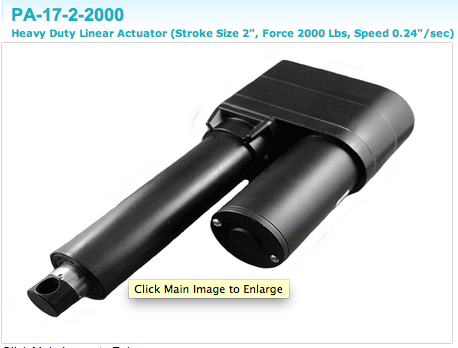So over the last few months I have been subconsciously looking around the city to find any type of device that can operate on the same basic principle as the proposed Lateral Synovial Joint Loading device and the closest thing that seems to be these large massagers I’ve found.
I got them uploaded to the Natural Height Growth Youtube Account (source) and I’ve embedded the video below. Like I said in the video, I’m having a little bit of trouble calculating what would be the proper Force and Frequency we should get on it because from only the few sources of devices out there, we might have to make compromises for frequency or loading.
The recommendation has been 5-15 Hertz which is actually 5-15 times the moving part of the device clamps down, retracts, and clamps down again.
Now below here is two videos from the Progressive Automations Youtube Account (source 1, source 2). You can see that with these large devices they are a lot slower, but have much larger force. The maximum force for at least this company based in Vancouver, CA is around 2000 lbs.
From the Progressive Automations website (source) . We have these types of specs….
 Heavy-duty linear actuators are very powerful units with ability to push, pull and hold large amounts of force. These actuators are ideal for use in industrial or commercial applications were large force and stability is required. If you require this model to have a built-in potentiometer please call us to have it modified. Heavy-duty actuators can be combined with PA-27 control boxes, rocker switches and mounting brackets. The mounting brackets are specifically designed for our actuators and allow 180 degrees of rotation. For more information on wiring the actuator to the rocker switch please view our wiring diagram.
Heavy-duty linear actuators are very powerful units with ability to push, pull and hold large amounts of force. These actuators are ideal for use in industrial or commercial applications were large force and stability is required. If you require this model to have a built-in potentiometer please call us to have it modified. Heavy-duty actuators can be combined with PA-27 control boxes, rocker switches and mounting brackets. The mounting brackets are specifically designed for our actuators and allow 180 degrees of rotation. For more information on wiring the actuator to the rocker switch please view our wiring diagram.
Specifications:
- Voltage: 12V dc Linear Actuator
- Stroke Size: 2″
- Load Capacity: 2000 lbs
- Speed: 0.24”/sec (no load)
- Type of duty: 20%
- Operational temp: -25ºC~+65ºC
- Protection class: IP65
- Certification: CE
- Built-in limit switches, not adjustable.
Me: I would recommend the stroke size of 2″ to make the complete device more compact but still giving some room for the variation in limb width. All of these devices work on DC Power so there is a AC to DC power converter we can buy. However, I think we can solve the DC issue from the 2nd video where you just strip the wire and connect it to a Integrated circuit board and make the device possibly move faster than it was designed (if that is even possible). Ultimately the problem is the speed or frequency. That can be solved with those large massagers in my videos but they don’t have the type of loading power that these real Actuators have.
In the 2nd video you can see that there is even control boxes you can buy which can simultaneously control the linear actuators but they are really slow in movement.
